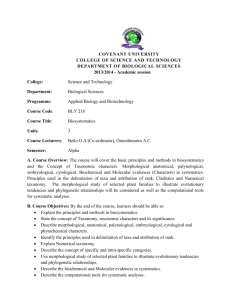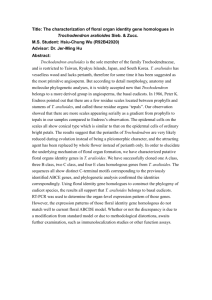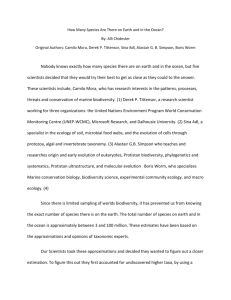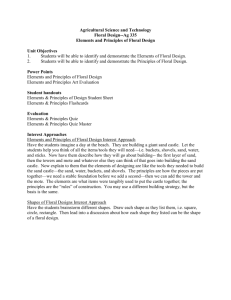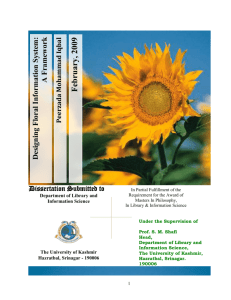BIO 2103 - Makerere University Courses
advertisement
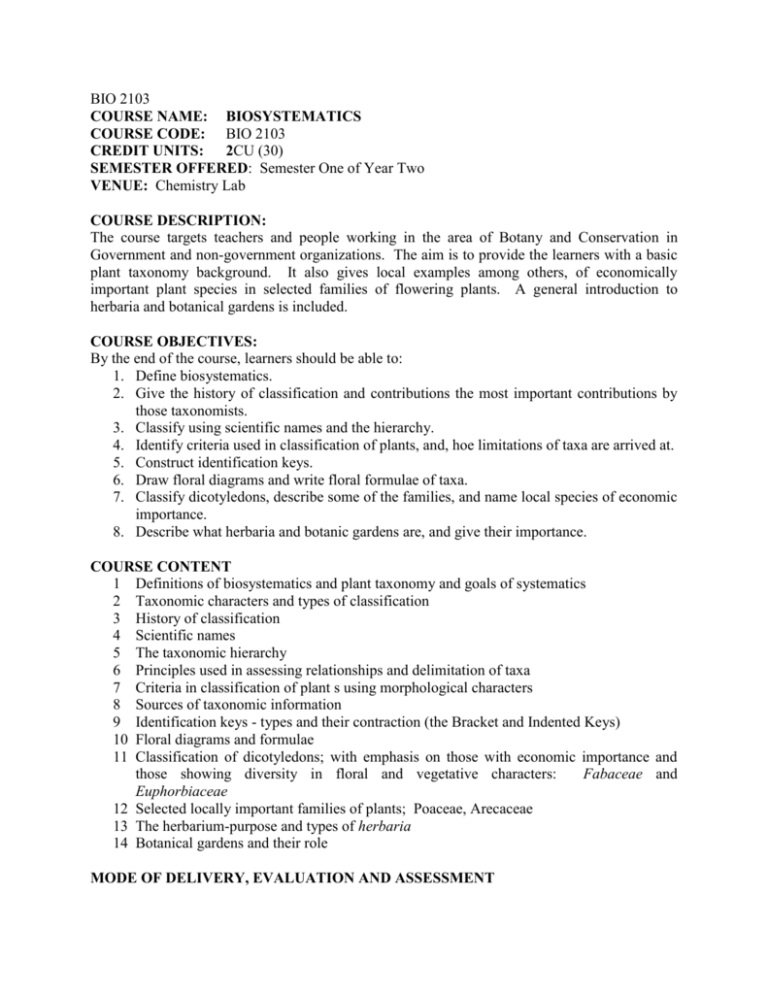
BIO 2103 COURSE NAME: BIOSYSTEMATICS COURSE CODE: BIO 2103 CREDIT UNITS: 2CU (30) SEMESTER OFFERED: Semester One of Year Two VENUE: Chemistry Lab COURSE DESCRIPTION: The course targets teachers and people working in the area of Botany and Conservation in Government and non-government organizations. The aim is to provide the learners with a basic plant taxonomy background. It also gives local examples among others, of economically important plant species in selected families of flowering plants. A general introduction to herbaria and botanical gardens is included. COURSE OBJECTIVES: By the end of the course, learners should be able to: 1. Define biosystematics. 2. Give the history of classification and contributions the most important contributions by those taxonomists. 3. Classify using scientific names and the hierarchy. 4. Identify criteria used in classification of plants, and, hoe limitations of taxa are arrived at. 5. Construct identification keys. 6. Draw floral diagrams and write floral formulae of taxa. 7. Classify dicotyledons, describe some of the families, and name local species of economic importance. 8. Describe what herbaria and botanic gardens are, and give their importance. COURSE CONTENT 1 Definitions of biosystematics and plant taxonomy and goals of systematics 2 Taxonomic characters and types of classification 3 History of classification 4 Scientific names 5 The taxonomic hierarchy 6 Principles used in assessing relationships and delimitation of taxa 7 Criteria in classification of plant s using morphological characters 8 Sources of taxonomic information 9 Identification keys - types and their contraction (the Bracket and Indented Keys) 10 Floral diagrams and formulae 11 Classification of dicotyledons; with emphasis on those with economic importance and those showing diversity in floral and vegetative characters: Fabaceae and Euphorbiaceae 12 Selected locally important families of plants; Poaceae, Arecaceae 13 The herbarium-purpose and types of herbaria 14 Botanical gardens and their role MODE OF DELIVERY, EVALUATION AND ASSESSMENT (a)Mode of delivery Lectures, Laboratory practical’s, discussions, seminars, workshops and individual research. (b) Evaluation i) A continuous assessment will be constituted by written assignments, practical’s and course unit test(s). ii) The continuous assessment will constitute 30% of the overall grade attained while the final University written examination will constitute 70%. READING LIST 1. Bridson D. & Forman, L. 1999 (3rd ed). The herbarium handbook. Whit stable Litho Printers Ltd. Great Britain. 2. Mabberley, D.J. The plant book. A portable dictionary of plants 3. Plant biosystematics.
